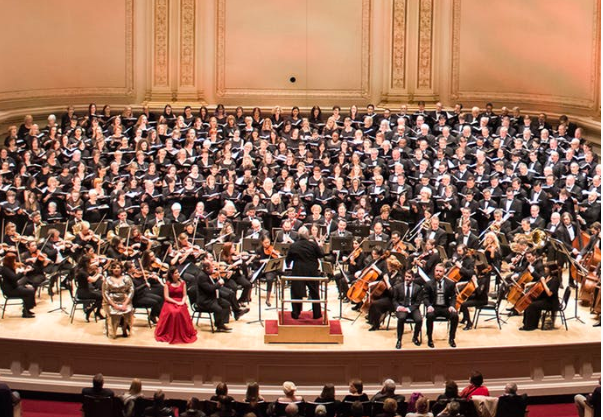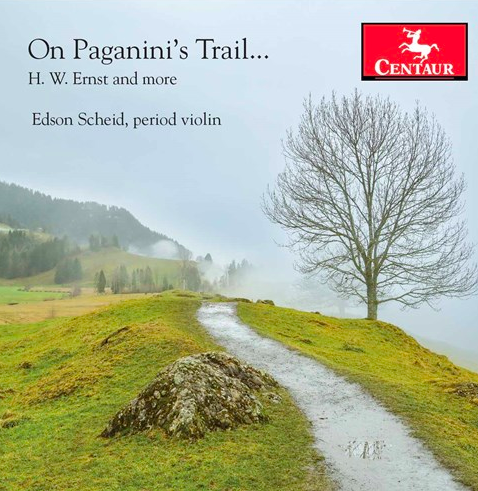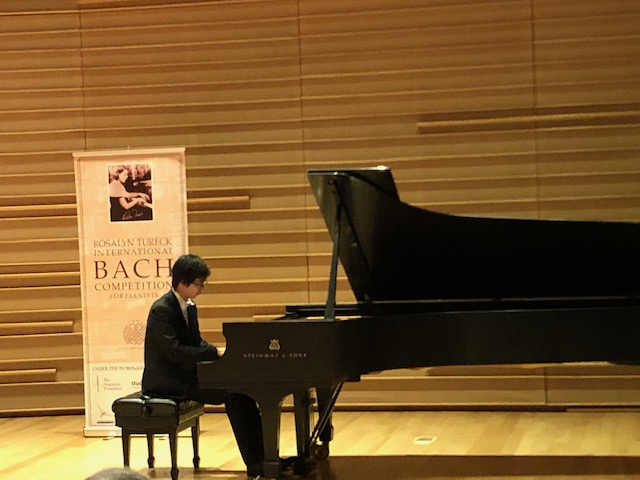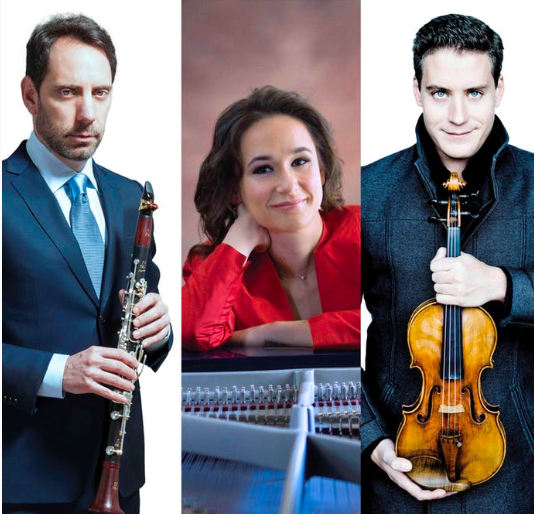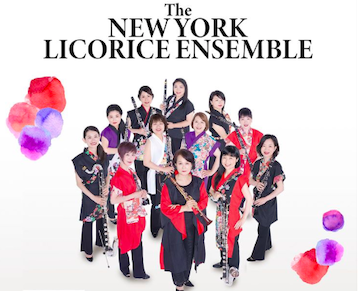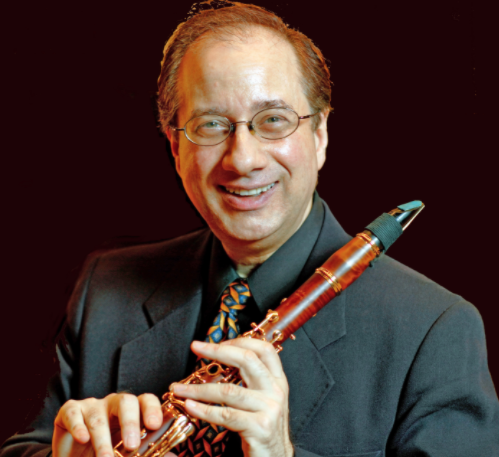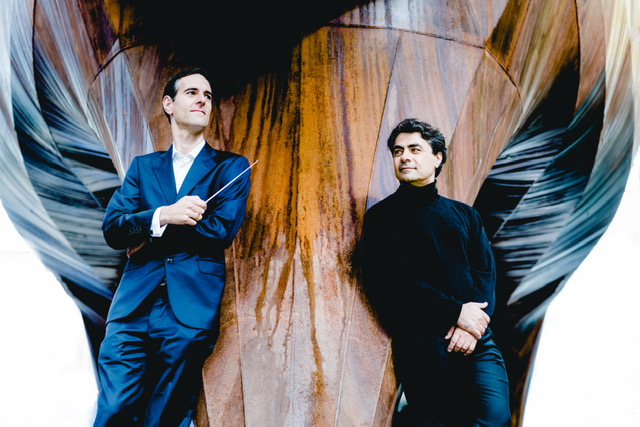Maghek: Seven Symphonic Poems about the Canary Islands
In 2016 this reviewer had the pleasure of reviewing a superb video recording of the complete Iberia of Albeniz for New York Concert Review, played by pianist Gustavo Díaz-Jerez (https://nyconcertreview.com/reviews/dvd-in-review-pianist-gustavo-diaz-jerez-plays-iberia-by-isaac-albeniz/). As it was a performer’s review, one neglected to mention the fact that his career as a composer was thriving as well. His compositions have in fact been heard throughout Europe performed by distinguished instrumentalists, conductors, and orchestras in Spain, Slovenia, Italy, Germany, Austria, Switzerland, Czech Republic, Slovakia, and Hungary – and one is probably omitting several countries.
Currently Mr. Díaz-Jerez is awaiting the release on Signum Classics of his double CD recording, Maghek: Seven Symphonic Poems about the Canary Islands, with the Royal Scottish National Orchestra – arguably one of the finest orchestras in Europe – under conductor Eduardo Portal. Mr. Díaz-Jerez took time out from his busy schedule recently to speak (via Skype) with New York Concert Review. Prior to our interview, he summarized some key points about the cycle as follows:
“The main idea about the cycle Maghek (this is how the Canary Islands aborigines called the Sun-goddess) is a personal evocation of the natural environment of the Canary Islands, conveyed (somewhat oneirically) to sound. For inspiration, I have focused in particular places in each island as well as in specific historical facts. Of course, there are many common elements among the seven works. I have a very strong scientific background, especially in mathematics. I think music and mathematics are very closely related, and to me the idea of “abstract” beauty is common to both. I’m also very fond of the concept of “emergence”: the idea that a complex system is more than the mere sum of its constituent parts. This phenomenon is seen all over the natural world, and it’s even present in pure mathematics. I like to think of my pieces much like living organisms, complex, emergent structures that arise from the sum of many, carefully intertwined, simpler parts. I’m also a computer programmer. I created some time ago a program (FractMus) that translates mathematical structures into musical material you can use for composition. Here is a link if you are interested: www.fractmus.com”
Rorianne Schrade for New York Concert Review:
Thank you – this is all so interesting! Now to start, I would love to hear about your recording sessions in Glasgow.
Gustavo Díaz-Jerez:
Right, it was last week. Well, this project has been going on for ten years actually, because the first of the pieces I composed is called Aranfaybo … it’s inspired by the island of El Hierro. That was composed in 2008, and that was the one performed in ten European countries. It was a tour with the Hungarian Chamber Orchestra. So that was one, and then, when I composed the piece, I thought well maybe I can write one orchestral piece for – inspired by – every island [for those unfamiliar with the Canary Islands, there are seven, including Tenerife, the birthplace of Mr. Díaz-Jerez].
NYCR: Wonderful …
G D-J: So, the second one was Ymarxa … and that was premiered by the Royal Philharmonic, Charles Dutoit conducting. And then every year after that I composed one of them, well more or less. Some of them are longer than the others.
The shortest one is Aranfaybo which is thirteen minutes, and the longest one is a piano concerto, which is one of the newer ones, which is about twenty-five minutes. One of them is a clarinet concerto called Ayssuragan, with my friend Cristo Barrios, who recorded the piece in Glasgow. And the other one is a piano concerto … I wrote it for a friend of mine who is a pianist specializing in contemporary repertoire. He is a Spanish pianist, Ricardo Descalzo.
Both the clarinet concerto and the piano concerto are not pieces thought of as the Romantic kind of concerto for soloists. They’re actually like orchestral pieces where the soloist is kind of part of the orchestra but has a very important role by itself.
Since I am a pianist myself, I was very concerned with the difficulty of the piece, because I think the problem with many contemporary piano solo concerti, in general, is that they are usually very, very difficult to play, to rehearse, to perform. So, I was very concerned with that.
You know de Falla’s Nights in the Gardens of Spain?
NYCR: Yes.
G D-J: That’s my idea of the piece, a piece which is more concertante than Rachmaninoff or Brahms. It’s very playable. It’s not so difficult that non-contemporary specialists would say no. Any pianist would be able to enjoy and play it.
NYCR: Good!
G D-J: Although there are some extended techniques inside the piano. Everything is written from the perspective of the performer … everything. Not only the piano part but the orchestral part. I think that’s very important nowadays, because, you know if you see the programming 95% is music from the past, from the nineteenth century, eighteenth century. And very little contemporary music is done in my opinion. And there must be a reason.
One of the reasons I think is that the amount of effort that needs to be put into it to rehearse and to learn the music is greater than the music of the past. And it’s maybe because every composer was also a performer. I think that makes a big difference. Not all contemporary music is difficult to perform but many pieces are, so I wanted to make sure that my pieces are as easy to rehearse and play …
NYCR: and idiomatic?
G D-J: yes, they are written very ergonomically for the instruments. And that was something I learned in the recording.
The orchestra is absolutely unbelievable. Their reading is hard to believe. They read it at sight… I mean I sent the scores like three months in advance, but they are capable of reading it almost at sight. I’m not saying they did but … (laughs) it’s unbelievable. I mean, there are seven pieces, the total is like 140 minutes of music…
NYCR: and how many hours of recording did you have with them?
G D-J: We had eight sessions of three hours with a twenty-minute pause in each one…so that’s about I would say twenty-two hours more or less … so, basically the plan was that they play the piece from beginning to end, and they did it so well that I think it would be good for a concert. They played the piece through, and it was already at such a high level, that … (laughing) I was really amazed.
NYCR: And were there any surprises?
G D-J: Yes, especially in the newer pieces, in the ones that haven’t been performed, I found out that certain things didn’t work as I expected in terms of balance. That’s the most difficult thing for a composer. You know even Mozart had to change some things in the Jupiter Symphony. Once he heard the piece, he had to adjust some of the dynamics of the instruments. So that was kind of a surprise. Some things, I thought they would be too soft for instance. I tend to write the harp part a little bit louder …and the harpist had such a big sound that I had to tell her, you know, just a few dynamic markings less. But in general [with] everything I’m very, very happy, because everything in general worked as I expected.
NYCR: And do you envision it all (the entire two-and-a-half-hour cycle) being done in a concert at some point, or …
G D-J: Well, it’s a possibility, but I think it would be kind of too much of the same composer in one concert. Our idea is to have several orchestras play one of the pieces. We are working on that here in Spain and possibly also abroad in the UK… or maybe two of them.
NYCR: I see. When we’re talking about difficulty for the musicians, I want to bring up difficulty for the audience in terms of understanding. Now imagine I’m a five-year-old, and I hear something about fractals and L-systems in your music, and I say what’s that? How would you explain the music to a five-year-old?
G D-J: (laughs) That’s a hard question really. Well, you know, you have to be very poetic. When you are speaking to people who don’t know … I mean they don’t really have to know what’s going on underground to enjoy the music.
I would say these things I use, mathematical procedures, are really just like a scaffolding. It’s a way I use to get raw musical material, like prime matter, musical prime matter. I think of it as a painter or a sculptor, for instance clay or iron or granite, whatever… In itself it’s not a work of art… but it’s what you do with it.
NYCR: It’s a medium.
G D-J: Material, exactly. So that mathematical underpinning is just a medium. And what that gives me are structures, musical structures, because what I do is: I take those mathematical procedures, and I make a correspondence with the musical language.
So those structures which are coherent – they are not random, of course – they have coherency – they are translated to the musical language, and that becomes a medium. That in itself is not a work of art. The material is melodies, rhythms, forms … and I take them, and I make them into the timeline of the work of art.
It’s like, you know, Beethoven, the beginning of the solo of the Third Concerto, you know the scale, the C minor scale. In itself, the scale is just a scale. But when Beethoven puts that outside of time structure in the timeline of the piece, that scale becomes a work of art.
And that’s what I do with this mathematical-inspired material, exactly that. Because you know nowadays, I mean you can’t compose like Beethoven. I mean tonality is not for the music of art in my opinion. I mean you can use it for, maybe for commercial music, but you can’t write in C minor today, in my opinion.
NYCR: (silent disagreement about C minor and the tonality issue but realization that my opinion is not the topic of the day).
G D-J: I know this is very personal, but I think, you know, that that language was exploited up to its maximum, and we have to find new ways …
So, the important thing for me is first, that the music is written for human beings, I mean thinking about that someone has to play that and has to learn, to employ time … I mean you can’t expect a performer to be twelve hours practicing your music… it has to be as easy as the music of the past … in general…especially orchestral music. If you write for a soloist, then you can write more virtuosically, but if you write very difficult music for a large ensemble or an orchestra, then your music won’t be performed. So, I use those mathematical underpinnings from a very, very musical and practical point of view.
You know, when one of my pieces Chigaday for the island of La Gomera was premiered, I have a group of friends here in Madrid (non-musicians, you know I play golf, and we go together), and I invited them to the concert, and they appreciated the music. I mean they thought it was, for them it was kind of alien, but in the good sense. They found strange sonorities and … but it was a very, very pleasant experience. So, I think everything depends on what you do with the material.
I think just like in nature, repetition is an important part of the complex system in nature … in music too, we are prepared as human beings, we have evolved to recognize patterns both visually and aurally, so I think a piece of music be it written in the tonal system or any other system, if it doesn’t have a certain amount of repetition, something you can remember, then it becomes incomprehensible.
NYCR: I agree.
G D-J: and I think that’s part of the key in writing contemporary music, that the audience can enjoy and understand.
NYCR: Yes. Some of that repetition I assume you’re referring to is what is embedded in the material and some of it is in your manipulation of the material.
G D-J: Exactly … absolutely. You know I believe my music is quite complex in terms of sonority and orchestral texture, but I try always to be concerned with that repetition of certain elements. I mean I’m not talking about repeating the same thing over and over, but relationships between the instruments… something most composers have done throughout history. Somehow, we must not forget that that is one of the keys of understanding anything, not only music but any piece of information, be it music or literature or painting… it has to have some amount of recognizable patterns, I believe.
NYCR: Yes. I know you created your own program and made it available (at fractmus.com), so other composers could use this program… so are you starting a whole school of composition, and are others going to use it? and is their music going to have a recognizable quality that relates to yours, or would it be completely different?
G D-J: Well, I know the program has been used for many years, because the program is twenty years old already. I wrote it for my doctoral dissertation in 2000, so it’s almost twenty years old. It’s still alive and kicking, and I’m aware it has been used by many composers. You see the program is so open-ended that the material it gives you can be manipulated in so many ways that every composer can use it in its own way of writing, so I wouldn’t say that I would be able to recognize something that came out of the program. It’s really infinite, because it uses mathematical formulas that translate into numbers and those possibilities are really infinite. It would be impossible to know, unless they said so, but usually they don’t say so. So, what the program is is really what I just said: it translates mathematical formulas into musical elements, like pitch, rhythm, and dynamics… so I’ve used it in many of my pieces.
NYCR: Yes. So, have you written a lot of music without the program?
G D-J: Yes, but I use other structures, not related to the program. But usually in my music, there is always a mathematical hidden layer… kind of in the background, inspired by some mathematical process, but I then use it in a more intuitive way. Like something that I always think … like Beethoven for instance… when he wrote the Pastoral Symphony, where do those melodies come from? They come from culture, from other melodies he heard, maybe from imitating the birdsong, when he took those walks outside of Vienna, right? so it comes from somewhere. So, I kind of mine the computational universe, the mathematical universe to search for structures that I can use as musical material. And of course, I decide… if I try something and I don’t like it, I discard it. It’s a beautiful process, because it’s really a search, a search for what I consider beautiful, of course … some other composer may say, “oh why did you throw out this melody? I think it’s great,” but you know it’s my decision, of course.
NYCR: perhaps a silly question, but say a very eager patron asked you to write something in C minor, what would you do?
G D-J: I wouldn’t. I have to be honest with myself. It would be a commercial kind of commission… I pay you this amount and you do what I say. That’s not a work of art … it’s like, I don’t know how to say it but … a carpenter, you ask “I want you to build a table, a three-legged table made out of rosewood, and do it this way and that way.” OK. He may do a beautiful thing but it’s not a work of art. Because he hasn’t put his own … I don’t want to say … soul or his own spirit, his own true way of working. It would be something commercial.
NYCR: The next thing is about fractals, which you use in your music, and I was reading about the first time the word was used by Mandelbrot in 1975 … you must have been a toddler or not even born.
G D-J: I was five.
NYCR: So, I want to know where in your life did you come to all these ways and thoughts?
G D-J: It was in 1982 when my father bought me a computer, you may have heard of it, the Commodore 64… remember? It was a home computer from the 80’s. The difference between those computers and the computers we have nowadays is that you could program the computer right away. It had a basic programming language, so I started learning the basic programming language, and I started to find out about math and fractals at that time actually, so I became very interested in mathematics and programming. That was the seed of my interest.
NYCR: Fantastic … I see.
G D-J: and I remember writing programs when I was twelve, twelve or thirteen. And I remember a program in the Commodore 64 Basic to map, or translate, how the prime numbers turn into sounds, into musical notes… and they created a kind of melody, that of course at that time I didn’t use it for anything, but I just wanted to know, oh, if instead of numbers you use notes, but with the structure of prime numbers, what will it sound like? So that’s the kind of thing I started doing…
NYCR: Were you one of those rare children who memorized every prime number?
G D-J: No, I know up to 100 but …no, I use them in my music, because you know they create fascinating rhythms, because there are so many gaps. Once you reach a higher number there are many gaps in between. So you can use the prime numbers as a way of creating interesting rhythms. And I use them in every piece in the cycle. The very rhythmical sections are mostly based on prime numbers.
NYCR: That’s fascinating. This all brings to mind the numerical interest of J. S. Bach … we know of it and all as an additional aspect, but often we are mainly aware that it is beautiful.
G D-J: There is a very big mathematical underpinning. A Bach fugue is a fractal musical structure, because it has the subject in different transpositions, at different speeds, and that’s part of the fractal geometry…that’s one of the keys of fractal geometry, repetition of patterns at different scales.
NYCR: … so augmentation and diminution and …
G D-J: Exactly.
NYCR: I never really applied (the term fractal) to earlier music. I see. I wondered also whether you had any earlier composers whom you found particularly vital as influences on your composing.
G D-J: Yes … Debussy, Ravel, Stravinsky I like, and I’m very, very fond of early music composers like Machaut, Ockeghem, Josquin Des Prez, Gesualdo…
NYCR: And you made a magnificent video of the entire Iberia, so I’m sure Albeniz is in there somewhere…
G D-J: And not only his music was very advanced for his time, but also the piano writing was very, very advanced for the time. And also I seem very related to him, because he was a great composer, but he was a pianist too. He was really a performer.
NYCR: I reviewed your recording of Iberia and was so taken with it … you are a superb pianist.
G D-J: Thank you… and I still play it quite often. I play it three or four times a year. It is a very difficult program, because to play the whole thing in one recital is … something.
NYCR: So, you are continuing to combine piano concerts with your schedule?
G D-J: Yes. I also have a chamber music group resident in Tenerife, and we do a lot of chamber music, some of it contemporary, but not only contemporary. We do everything from Baroque to new commissions.
NYCR: I see. Now, when people hear your music, do they say it reminds them of any particular composer?
G D-J: That depends on how much music you have heard. If you are informed about for instance the spectralist school, you can recognize some of the elements. Tristan Mirail or Gérard Grisey. But you know, just like Beethoven and Mozart wrote in the tonal system and sound different, so I sound different than those composers.
NYCR: If you had to choose one movement of your cycle that is your favorite that you would want an audience member to hear first, what would it be?
G D-J: Oh, that’s like choosing between seven of your children. I wouldn’t do that. But I can say that Aranfaybo is the most “classical” piece, and Guanapay, which is the piano concerto is the most experimental.
NYCR: and what are some of the responses to your music that have made you the happiest? … have you had that feeling that “they really get it.”
G D-J: Yes, you know from people who are not used to listening to any classical music. It has happened a few times with my orchestra pieces and with my piano pieces. I was approached by a girl, I mean she wasn’t five but maybe twelve, and really honest about how much she liked my piano pieces. And that’s great.
NYCR: Was that Metaludios?
G D-J: Right. She came with her mother and she was really fascinated by the sonorities and … she didn’t know … she’s not a musician… so that makes me the happiest. Because of course if you know the repertoire, it’s logical that you can appreciate, but if someone is not familiarized with classical music or contemporary music and appreciates your music, then … I’m very happy. But, having said that, I have to write what I have to write. I wouldn’t write something thinking that more people are going to like it. I don’t think that’s an artistic attitude. I think that you have to write what you have to write. Be honest with yourself and of course be concerned about the performer because after all someone has to play your music, but I think if you write think oh, if I put this maybe more people will like it … no, that’s … no.
NYCR: Now I also wondered about the images. There are many images from mythology and geography and geology. How do the visual aspects correspond to the musical? Can you discuss any of that?
G D-J: Right. Well, the whole cycle is really about the natural beauty of the Canary Islands. It’s not about the folk music of the Canary Islands, it’s about the nature of the Canary Islands. So, in the pieces, there are many, many evocations of natural forces. I mean you can hear the sea, I mean I have orchestrated some passages to sound like the waves and the wind. You can listen for instance to the beginning of Chigaday … that’s an evocation of the wind with the sea birds … and not only that, but for instance the ragged textures of the volcanic landscape, because you know the Canary Islands are completely volcanic, like Hawaii is the same type of case. So, I try to evoke musically those things that are very specific to the Canary Islands. And that’s about for instance the geology, but we have amazing forests and they are called laurel forests and they existed in Europe around twenty million years ago. And those forests used to be all over Europe, I think around twenty million years ago, and nowadays I think they are only in the Canary Islands and in Madeira (you know the islands that belong to Portugal) … so that kind of forest is very, very green and with tortuous trees, very humid, it’s amazing… looks like… have you been in the highlands in Scotland? It’s very similar actually. I was so surprised.
NYCR: Oh, and you were just there…
G D-J: Yes, I went to the highlands, some of the most beautiful places I’ve been, and some of the forests look … maybe not the same type of tree but …looks very similar. The tree, the trunk is filled with moss… and in the Canary Islands we have something very similar. So. I tried to evoke that feeling of being in a place, kind of dark and green and misty, and I tried to evoke it with musical texture.
NYCR: So you were born in the Canary Islands, but then you came to the US to the Manhattan School of Music. I am thinking the connection must have been Solomon Mikowsky?
G D-J: Right… Yes!
NYCR: and he has, or did have, a music organization in the Canary Islands.
G D-J: I think the last festival was around 2006… we are trying to revive it …
So yes, I met him in a competition in Madrid, and I was just finishing my studies in Tenerife, so he said “why don’t you come to New York” … and you know I was sixteen at that time, so I came to New York when I was 17, in 1987. So yes, I met him, and he was a wonderful teacher and more than a teacher – he has been almost like a second father. And I have a very close relationship with him … today I wrote an email to him a few hours ago.
NYCR: So are you often in the Canary Islands?
G D-J: Our festival in the auditorium, the resident chamber music group, we play almost every month except September and January. And I go very often … my family, my mother, my siblings live there so I go.
NYCR: Now not that this is important but, is there music in your family? You mentioned your father giving you the computer, and I’m guessing there is a mathematical/scientific interest there …
G D-J: Yes, he’s responsible for me being a musician because he when I was little, my grandmother had an upright piano, and he bought me lessons, and then the conservatory, so … and my mother sang very, very well… she wasn’t a professional singer, but she has a very, very good ear. And my sister is a composer too. Dori is her name, Dori Diaz-Jerez. And we inherited I think the musical talent from my parents, obviously.
NYCR: …and your father played the piano?
G D-J: The violin a little bit and the piano a little bit, but as an amateur…
NYCR: Sometimes the amateur passion is very strong …
G D-J: Yes, right …he made sure we went to the best teachers there, in Tenerife, and then in New York, so … yes, if you don’t have the support of your family it’s very difficult. If you are a child, it’s very hard to become a musician if your parents don’t believe in it…
NYCR: …or if they never listen to it or play it in the house. So … you’ve combined music and science in ways that many cannot.
G D-J: I will tell you a little story. You know my scientific interest…the side of the computers came when I was, I must have been four because my younger brother wasn’t born yet, and we used to live near the beach … my parents have a house near the beach, and we had a long room … and my sister and I, we used to close every door, so everything would be dark, just to play, you know … children. And from the kitchen window, the light of the sun passed through the keyhole of the door, and you know it made a camera obscura … you know what it is, right? So, I realized it was being projected on the wall, the images from outside, like a little movie. And I was so fascinated… and I remember that, and I was four, and my sister was three years old, and I think that kind of awakened my interest for science from there, because it was so breathtaking … I was watching the cars pass, and – because it’s like a camera – and I remember it so vividly, that image. That awakened my curiosity for science, to find out why that happened … it remained with us for many years and I think that made me want to find out things about nature and science …
NYCR: I imagine there must have been a struggle at some point deciding between your love of science and math and music …
G D-J: No, I think my love for music has been greater…I mean I love science of course… but so much to become a scientist … no, my love of music is too great to be just an amateur in that …
NYCR: well, I have so many questions, but … aside from this recording, is there another project coming up ahead?
G D-J: Yes, there is! I hope that by the end of next year or maybe 20-21 I want to record another CD with more piano pieces, my Metaludios.
In the first one I recorded three books of six pieces each, so there are eighteen pieces in total…and I’ve written already 25. So my plan is to record two new books plus an older piece I have, so that would make up another CD. And also maybe some chamber music … I want to record some of my chamber music pieces.
NYCR: Wonderful! Tell us more about the origins of your composing Metaludios…
G D-J: Well, you know, since I’m a performer, a concert pianist, I’ve been composing really all my life. When I started playing the piano people asked me “what do you want to be when you are older” and I said I want to be a composer. That’s what I said when I was ten years old. So, I’ve been composing really all my life. But maybe for the past 25 years I’ve taken it more seriously, and I’ve been writing these pieces for over six years now.
NYCR: and do these (Metaludios) have anything to do with your (computer) programming?
G D-J: Yes. Some of them are. All of them have to do in some way or other with a mathematical idea – not idea, structure.
NYCR: Would a performer, let’s say someone who is not familiar with the technique behind the composition, simply play them?
G D-J: Yes, they could play them without any knowledge of what’s going on underway… but of course as with all music, if you know how it’s constructed, how it’s put together, you know, it makes the piece more available to you.
NYCR: On these recordings you will be playing them?
G D-J: Yes … and I think any good musician can play them. You don’t have to be a specialist to play this kind of music. You have to know how to do certain things, because some of the pieces require extended techniques inside the piano…but everything is very well explained … you’ll see the score. I’ve put QR’s [QR codes] so you can scan with your phone and you can see how it sounds … it takes you to a YouTube video of myself playing the passage, then you know how to do it…because you know, we have the technology to do that … so that clarifies very, very much …everything is very thoroughly explained.
NYCR: Well I can’t wait to hear your orchestral pieces, and I guess I will be able to hear them in a couple of months?
G D-J: Yes, the first edit I will be able to send a first edit in the beginning of November for reviewing …but it will be on the market in February.
NYCR: Very exciting! And I’d love our readers to know a bit more about you as a person… when you are not composing, tell us a bit about you … you are teaching as well.?
G D-J: I teach in San Sebastian, at the conservatory of San Sebastian, the conservatory of the Basque country…
NYCR: So, between your teaching, your concertizing as a pianist and your composing, are you basically making music all day long (aside from golfing which you mentioned). Are there any leisure pursuits?
G D-J: I like to walk with my wife … we take walks every day if we can, because exercising is something that is very important to keep the mind in a good state … but I must say that I feel very. very lucky to be what I am. If you think how many people are struggling in humanity, not only what happens in poor countries like in Africa or in India but others – sometimes, I hate to say it, but they don’t like their work. So, I feel so fortunate to do what I so – it’s amazing – in every sense, in composing, in playing, in teaching, in communicating your ideas to the students… I couldn’t be any happier to be where I am. Sometimes, you know, it’s luck, because if I were born in Somalia, I would probably be struggling, but I was very lucky to be born in Spain …
I also want to express thanks to those involved in the recordings, the conductor of the Royal Scottish National Orchestra, Eduardo Portal. He is a close friend and a champion of my music, and he was the one who initiated the recording project. He was awarded the prestigious “Leonardo” grant from the Fundación BBVA (Banco Bilbao Vizcaya Argentaria), which is our main sponsor. Special thanks also go to the soloist in the clarinet concerto (Ayssuragan) Cristo Barrios, to Ricardo Descalzo, the pianist for the piano concerto, and to the sponsors of the recording project, Fundación BBVA, Cabildo de Tenerife, Cabildo de Gran Canaria, and Gobierno de Canarias.
NYCR: Thank you so much for this interview, and we look forward so much to hearing the recordings of your music!
The website for more information is www.maghek.com.
by Rorianne Schrade for New York Concert Review; New York, NY

